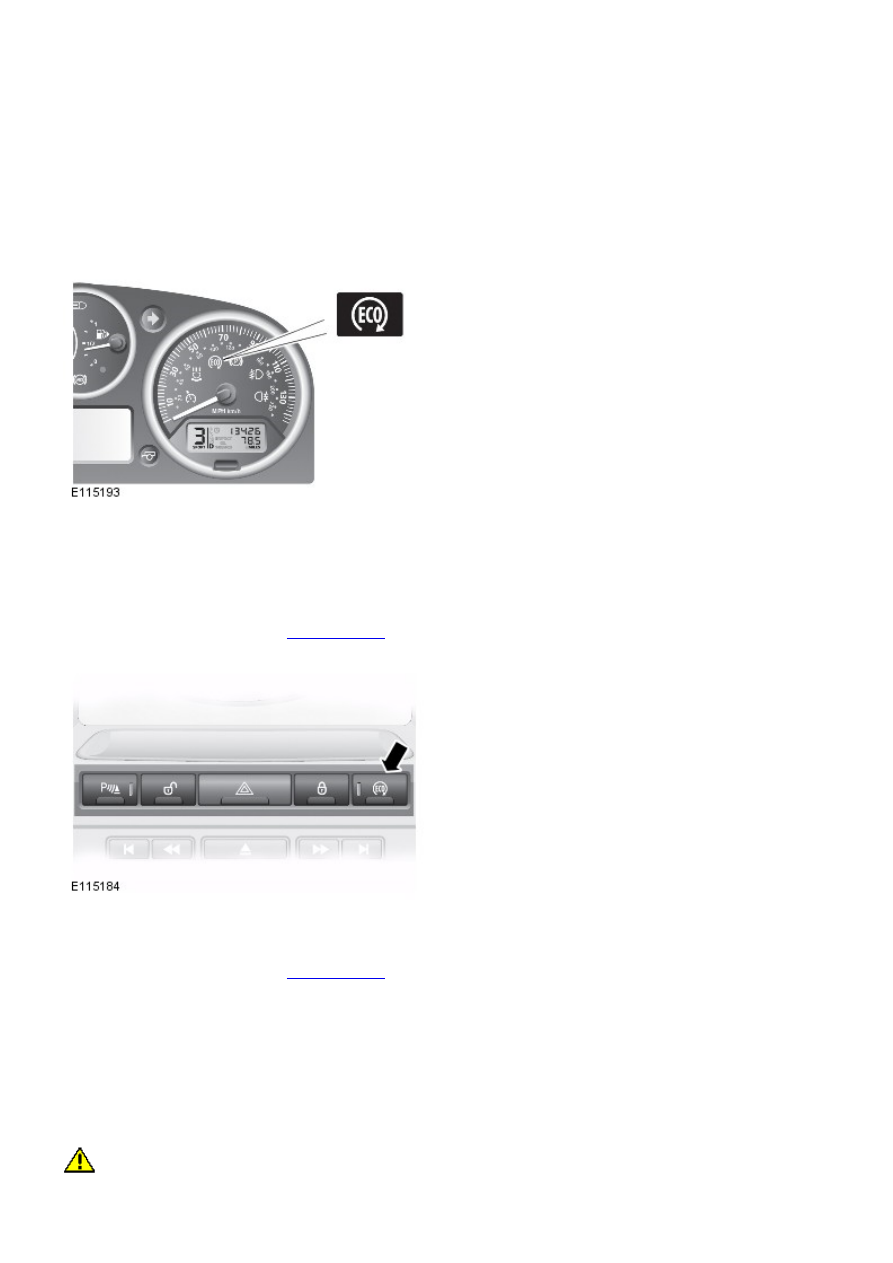Frelander 2. Manual - part 444

For additional information, refer to: Electronic Engine Controls - 2.2L Diesel (303-14 Electronic Engine Controls - 2.2L
Diesel, Description and Operation).
Overspeed Warning Indicator
The amber overspeed warning indicator is illuminated on receipt of a medium speed CAN bus signal from the CJB when the
vehicle is in power mode 6. The vehicle speed signal originates in the ABS module and is the same as that used by the
speedometer (see above).
The instrument cluster will flash the overspeed warning indicator at a rate of 2 Hz for 5 seconds if a speed of greater than
75 mph (120 kph) is reached. The first flash of the indicator will be accompanied by a chime from the instrument cluster. If
the vehicle stays at this speed, the indicator will remain illuminated after the 5 second flashing period. The instrument
cluster will extinguish the indicator if vehicle speed drops below 71 mph (114 kph).
Stop/Start Vehicles - From 2010 MY
Eco 'Stop/Start' Indicator
The TD4_e introduces the first intelligent ‘Stop/Start’ system into a Land Rover vehicle. The system automatically shuts
down and restarts the vehicle’s engine when the appropriate conditions are satisfied. This reduces the amount of time the
engine spends idling, thereby improving fuel economy and reducing emissions. The driver will be notified that the engine is
shutdown by the ‘Eco’ icon being illuminated in the instrument cluster. Other warning lights normally associated with an
engine shutdown, for example the ignition and low oil pressure indicators are suppressed so will not illuminate during an
engine shutdown in a Stop/Start cycle.
For additional information, refer to:
Starting System
(303-06C Starting System - TD4 2.2L Diesel, Vehicles Built From:
01-03-2009, Description and Operation).
Eco Switch
The Stop/Start system is automatically activated each time an ignition cycle occurs. However, the driver can deactivate the
system by pressing the ‘Eco’ switch in the fascia.
For additional information, refer to:
Starting System
(303-06C Starting System - TD4 2.2L Diesel, Vehicles Built From:
01-03-2009, Description and Operation).
The Eco switch also operates the Gear Shift Indicator; for additional information refer to Gear Shift Indicator section,
below.
CAR CONFIGURATION FILE
The car configuration file contains all relevant data about the specification and market condition of the vehicle,
immobilization codes and driver personal settings. The master repository for this information is the CJB, with a back up
being held in the instrument cluster. The information is continuously transferred between the 2 components to ensure the
data is constantly backed-up.
CAUTION: W hen a new instrument cluster is to be installed, the Land Rover approved diagnostic system must be
connected to the vehicle and the instrument cluster renewal procedure followed. This will ensure that vehicle coding data
is correctly installed in the new instrument cluster. The Land Rover approved diagnostic system will also record the current